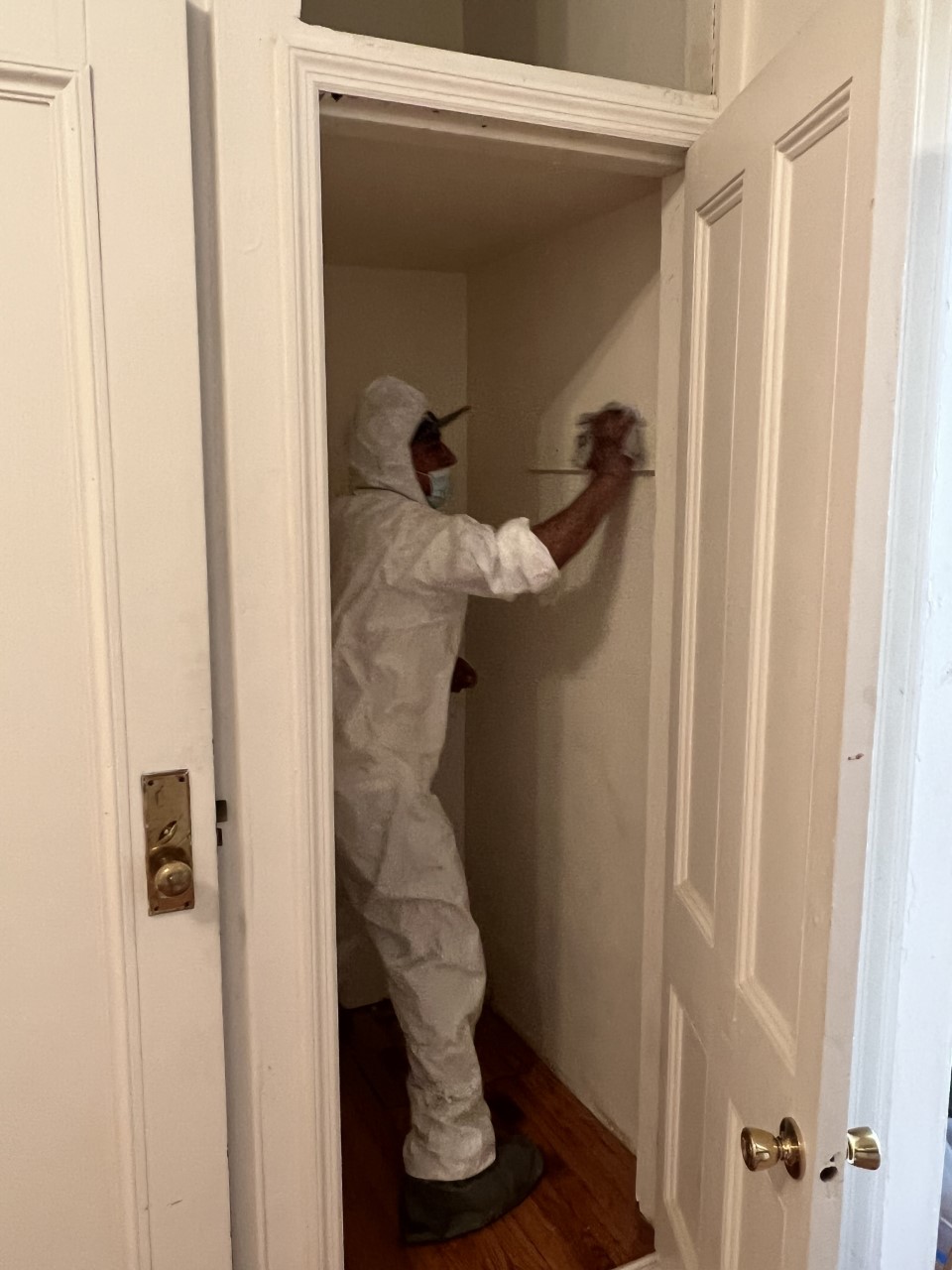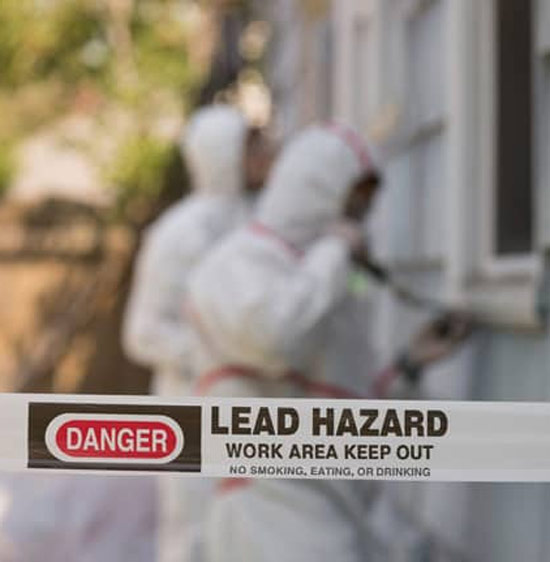Lead Paint Removal Service-- NYC's Trusted Solutions for Lead Security
Crucial Devices and Strategies for Efficient Lead Violation Cleaning
Attending to lead infractions successfully necessitates a detailed strategy that mixes the right tools with calculated methods. The initial step entails furnishing workers with Individual Protective Equipment (PPE) to guard their health. Concurrently, the use of specialized cleanup devices, such as HEPA vacuums and lead-specific cleaner, is imperative for extensive pollutant elimination. Effective control approaches, consisting of plastic sheet and unfavorable atmospheric pressure systems, are vital to prevent the spread of dangerous products. Risk-free disposal methods and stringent adherence to regulative standards make sure accountable handling of poisonous waste. What are the nuanced strategies that absolutely make a difference?
Personal Protective Equipment
Individual safety equipment (PPE) is an essential part in the reliable management of lead contamination cleanup. PPE serves as a crucial barrier, securing employees from the unsafe impacts of lead direct exposure, which can lead to extreme wellness repercussions. The vital PPE for lead cleaning consists of respirators, protective garments, gloves, and eye defense. Each sort of equipment is especially developed to mitigate different risks related to lead bits and dirt.
Respirators, especially those equipped with HEPA filters, are important for filtering airborne lead bits, preventing breathing. Protective garments, consisting of coveralls and disposable matches, prevents lead dust from sticking to employees' garments, reducing the threat of secondary contamination.
Moreover, rigorous training on the correct usage and maintenance of PPE is important. Workers have to be educated on wearing and doffing treatments to avoid contamination. Normal assessments and replacements of PPE elements are necessary to preserve their safety capacities, guaranteeing a risk-free and certified cleanup operation.
Specialized Cleanup Devices

An additional important device is the wet/dry vacuum cleaner, which can effectively tidy up both dust and fluid impurities. These vacuum cleaners often feature HEPA filters to provide an extra layer of safety and security. Wet wipes or tack towels are likewise vital for surface area cleansing; they are specifically created to record and hold lead bits, minimizing the danger of spreading out contamination.
For more persistent down payments, specialized lead-removal cleaning agents are required. These agents are developed to damage down lead fragments, making them easier to remove. Scrub brushes with sturdy bristles can assist in this procedure, specifically on harsh surface areas where lead dirt has a tendency to adhere more highly.
In addition, encapsulants are utilized to secure lead-contaminated surfaces, protecting against the release of lead dust. These specialized paints and coatings are developed to comply with numerous substrates, offering a long-lasting service for lead control.
Effective Containment Techniques
Effective control approaches are vital in reducing the spread of lead contamination throughout clean-up tasks. Implementing durable control techniques makes sure that lead bits do not migrate to unaffected locations, consequently shielding both workers and the environment. One main method is using plastic bed linen to seal contaminated areas. Sturdy polyethylene barriers can be installed from flooring to ceiling to produce a regulated work location, substantially reducing the danger of air-borne lead dust dispersal.

To improve control, encapsulants can be used to surfaces that are not being removed or disrupted. These specialized coverings bind lead dirt, reducing its availability for resuspension. Furthermore, all personnel should put on suitable Individual Safety Devices (PPE), consisting of respirators and non reusable suits, to avoid contamination spread.
Safe Disposal Practices
Making sure risk-free disposal techniques is an important part in the monitoring of lead contamination cleaning. Proper disposal minimizes the danger of lead re-entering the environment and endangering public health and wellness. The very first step is to recognize and set apart lead-contaminated waste from various other products. Safe and secure control using durable, leak-proof containers is essential to avoid splilling throughout transportation.
Carrying lead waste calls for adherence to rigorous guidelines. Using licensed dangerous waste providers guarantees that the materials are dealt with properly. Documentation, including manifests outlining the kind and amount of waste, should come with shipments to track the waste from the website of beginning to its last disposal destination.
Designated hazardous waste disposal facilities are furnished to handle lead-contaminated products safely. These centers frequently employ sophisticated techniques such as stabilization, solidification, or chemical therapy to reduce the effects of the lead prior to disposal. Landfilling in specialized, lined areas that protect against leachate from contaminating groundwater is an usual practice for final disposal.
Regular training for employees associated with lead waste disposal is essential to preserve safety and security standards and stop unexpected exposure. By sticking to these methods, companies can considerably reduce the environmental and health and wellness effects related to lead contamination.
Regulatory Compliance Tips

Sticking to regulatory compliance is paramount in the successful implementation of lead contamination cleanup. Understanding and complying with government, state, and local laws makes certain not just the security and health of people yet additionally the lawful and economic health of the cleaning company. The Environmental Protection Company (EPA) sets strict standards, such as the Lead Remodelling, Repair, and Painting (RRP) Regulation, which mandates correct qualification and training for service providers dealing with lead-based activities.
Conformity begins with a thorough evaluation of relevant regulations and policies. Organizations has my company to stay upgraded on any legislative adjustments, which can be assisted in with normal training sessions and signing up for market updates. Documentation is an additional essential conformity facet; maintaining in-depth documents of all activities, consisting of inspection reports, staff member training logs, and disposal manifests, is vital.
Furthermore, engaging with certified lead assessors or take the chance of assessors ensures that lead threats are properly recognized and alleviated. Companies have to impose the usage of Personal Safety Equipment (PPE) and make sure that safety methods are purely followed. Transparent communication with stakeholders, consisting of employees, clients, and regulatory bodies, will certainly promote a society of compliance and accountability, eventually adding to a safer and much more efficient lead clean-up process.
Conclusion
Effective lead offense cleaning demands DOH & HPD Lead Violation Removal NYC the assimilation of specialized devices and tactical methodologies to make certain safety and security and effectiveness. Individual protective devices (PPE) safeguards workers from exposure, while risk-free disposal practices and strict adherence to regulatory conformity are important for responsibly handling dangerous waste.